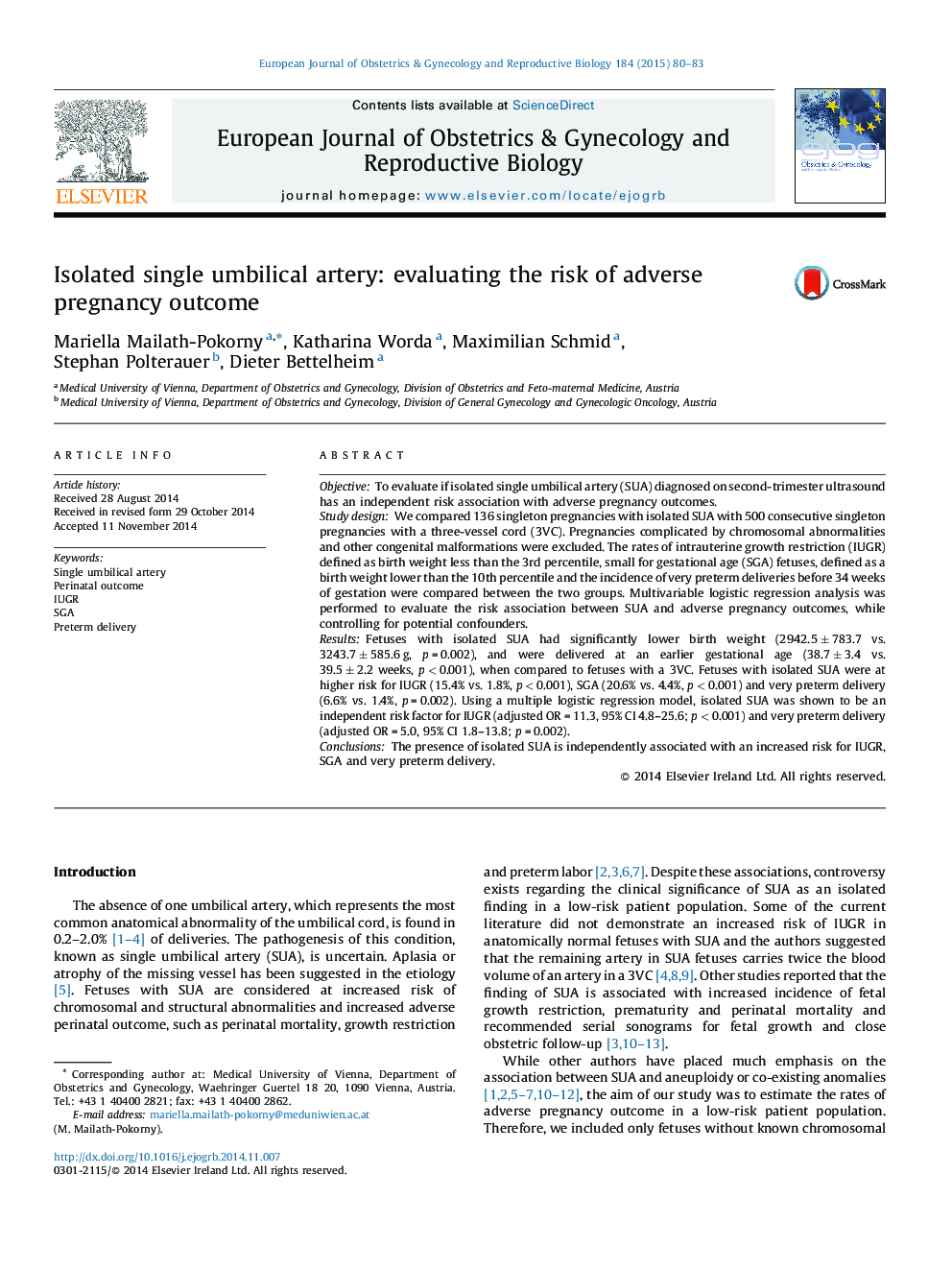| Article ID | Journal | Published Year | Pages | File Type |
|---|---|---|---|---|
| 3919769 | European Journal of Obstetrics & Gynecology and Reproductive Biology | 2015 | 4 Pages |
ObjectiveTo evaluate if isolated single umbilical artery (SUA) diagnosed on second-trimester ultrasound has an independent risk association with adverse pregnancy outcomes.Study designWe compared 136 singleton pregnancies with isolated SUA with 500 consecutive singleton pregnancies with a three-vessel cord (3VC). Pregnancies complicated by chromosomal abnormalities and other congenital malformations were excluded. The rates of intrauterine growth restriction (IUGR) defined as birth weight less than the 3rd percentile, small for gestational age (SGA) fetuses, defined as a birth weight lower than the 10th percentile and the incidence of very preterm deliveries before 34 weeks of gestation were compared between the two groups. Multivariable logistic regression analysis was performed to evaluate the risk association between SUA and adverse pregnancy outcomes, while controlling for potential confounders.ResultsFetuses with isolated SUA had significantly lower birth weight (2942.5 ± 783.7 vs. 3243.7 ± 585.6 g, p = 0.002), and were delivered at an earlier gestational age (38.7 ± 3.4 vs. 39.5 ± 2.2 weeks, p < 0.001), when compared to fetuses with a 3VC. Fetuses with isolated SUA were at higher risk for IUGR (15.4% vs. 1.8%, p < 0.001), SGA (20.6% vs. 4.4%, p < 0.001) and very preterm delivery (6.6% vs. 1.4%, p = 0.002). Using a multiple logistic regression model, isolated SUA was shown to be an independent risk factor for IUGR (adjusted OR = 11.3, 95% CI 4.8–25.6; p < 0.001) and very preterm delivery (adjusted OR = 5.0, 95% CI 1.8–13.8; p = 0.002).ConclusionsThe presence of isolated SUA is independently associated with an increased risk for IUGR, SGA and very preterm delivery.
